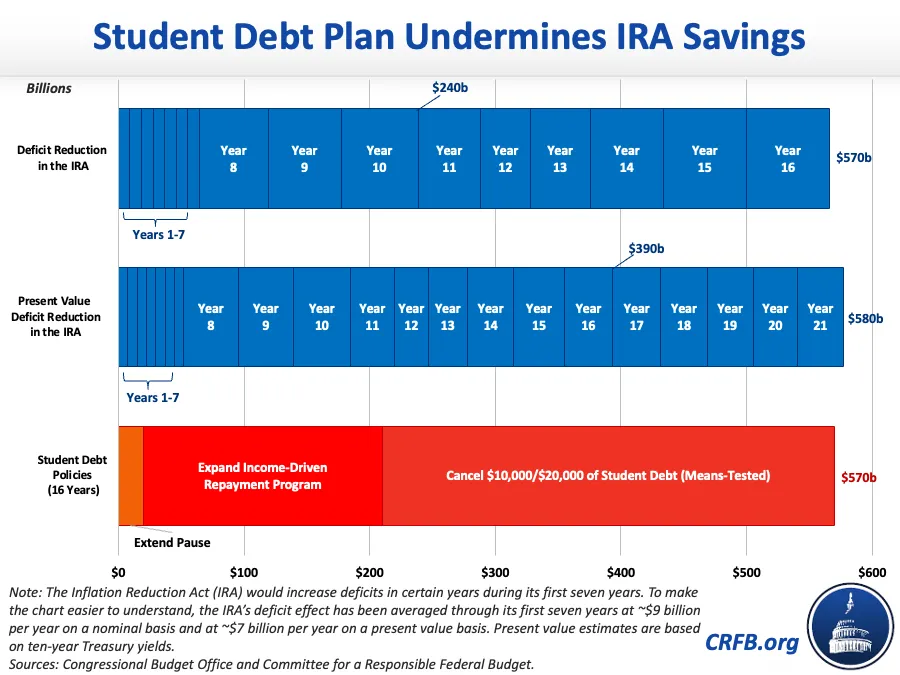Student Debt Changes Wipe Out IRA Savings
The student debt cancellation and relief measures recently announced by the Biden Administration will cost roughly $500 billion over ten years under our estimates, wiping out the $238 billion of ten-year deficit reduction from the Inflation Reduction Act (IRA) more than two times over. In total, we estimate the student debt proposals will cost as much as the first 16 years of IRA deficit reduction on a nominal basis and the first 21 years of deficit reduction on a present value basis.

Specifically, we estimate the student debt policies will increase deficits by $570 billion over 16 years, the same amount as the IRA will save over that period. On a present value basis, which is similar to how student debt changes are scored under credit reform rules, the IRA will save $580 billion over a 21-year period.
We are unable to estimate the cash-flow effect of either the Inflation Reduction Act or the student debt changes in full, though it is clear the student debt changes cost more than the IRA saves for some time. Over the first 13 months, the IRA will improve federal cash flow by less than $10 billion while the student debt changes will worsen cash flow by nearly $50 billion. Through 2031, the IRA is likely to improve federal cash flow by less than $200 billion while the student debt changes worsen cash flow by more than $300 billion.
Our estimates may prove overly generous, as they are based on our central estimate, do not incorporate a likely uptick in loans as a result of the new policies, and assume smooth implementation of the IRA. Under our higher-end estimate of the student loan plan, it will consume roughly 18 years of IRA savings on a nominal basis and roughly 25 years on a present value basis. If expiring Affordable Care Act subsidy expansions were extended without offsets in the IRA, the student loan plan might consume over 25 years of the savings on a nominal basis, and it is not clear whether such a plan would ever generate enough deficit reduction to finance the student debt cancellation on a present value basis.
In addition, as we have pointed out before, the inflationary effects of the new student debt plan will far outweigh any disinflationary effects from the IRA.
After taking an important step forward for deficit reduction through the Inflation Reduction Act, the President's student loan announcement represents two steps back.


